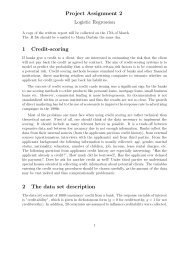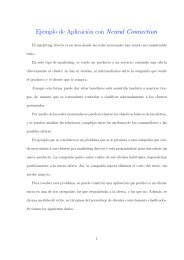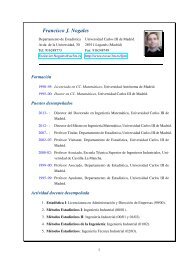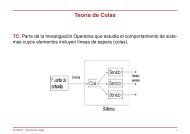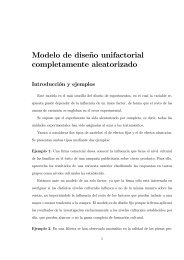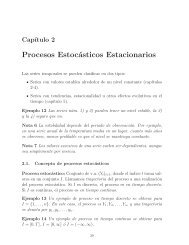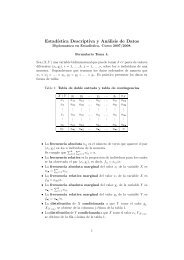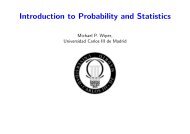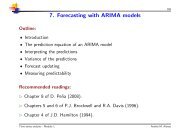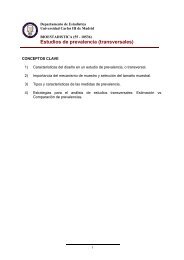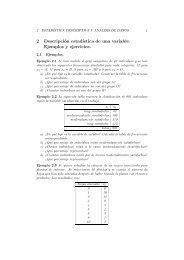Slides Chapter 1. Measure Theory and Probability
Slides Chapter 1. Measure Theory and Probability
Slides Chapter 1. Measure Theory and Probability
Create successful ePaper yourself
Turn your PDF publications into a flip-book with our unique Google optimized e-Paper software.
<strong>1.</strong>4. PROBABILITY MEASURES<br />
By axiom (ii), a probability function is a measure for which the<br />
measure of the sample space Ω is <strong>1.</strong> The triplet (Ω,A,P), where<br />
P is a probability P, is called probability space.<br />
Example <strong>1.</strong>10 Fortheexperiment(a)describedinExample<strong>1.</strong>8,<br />
with the measurable space (Ω,A), where<br />
define<br />
Ω = {“head”,“tail”}, A = {∅,{“head”},{“tail”},Ω},<br />
P 1 (∅) = 0, P 1 ({“head”}) = p, P 1 ({“tail”}) = 1−p, P 1 (Ω) = 1,<br />
where p ∈ [0,1]. This function verifies the axioms of Kolmogoroff.<br />
Example <strong>1.</strong>11 For the experiment (b) described is Example <strong>1.</strong>8,<br />
with the measurable space (Ω,P(Ω)), define:<br />
• For the elementary events, the probability is<br />
P({0}) = 0.131, P({1}) = 0.272, P({2}) = 0.27, P({3}) = 0.183,<br />
P({4}) = 0.09, P({5}) = 0.012, P({6}) = 0.00095, P({7}) = 0.00005,<br />
P(∅) = 0, P({i}) = 0, ∀i ≥ 8.<br />
• For other events, the probability is defined as the sum of the<br />
probabilities of the elementary events contains in that event,<br />
that is, if A = {a 1 ,...,a n }, where a i ∈ Ω are the elementary<br />
events, the probability of A is<br />
n∑<br />
P(A) = P({a i }).<br />
i=1<br />
This function verifies the axioms of Kolmogoroff.<br />
Proposition <strong>1.</strong>4 (Properties of the probability)<br />
The following properties are consequence of the axioms of Kolmogoroff:<br />
ISABEL MOLINA 14



